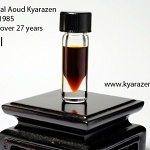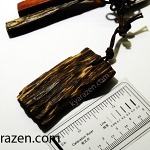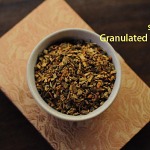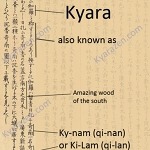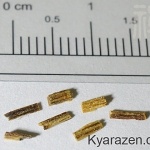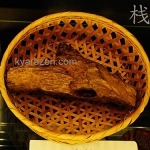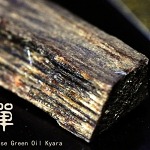Having received many enquiries on the identity of that mysterious drop of oil that I always sent out in packages, i.e. together in the package of the a few lucky purchasers of the Subitism heater, I thought I would push forward this write up, which was scheduled to a very much later date as it… [Read More…]
Comparing Jinkoh and Kyara
A summary of the comparisons between normal aloeswood and kyara/kynam in a table. Enjoy!
Little Vials of Joy – the ASAQ Thaqeel
I bet my website administrator is frowning at me right now. “Short titles to articles! The shorter the better! Clearer!” – she always exclaims at me, whilst frustratedly looking at my bad habit of having overly descriptive titles. But for this article I couldn’t help having an aptly descriptive title- little vials of joy. These… [Read More…]
How to store Kyara and fragrant woods
Kyara, being an extremely refined and rare fragrant wood material, should be protected from extremes and fluctuations in both humidity and temperature, dampness, light, and all other contaminating smells, including incense, perfumes, sandalwoods etc. It must be kept in an extremely clean and pure environment to preserve all its qualities and prevent damage or loss… [Read More…]
GCMS of Kynam
In one of the first few posts of the website, a video was shown where Chinese scientists, had performed a GCMS analysis of Kynam. Prior to this analysis, the scientists were skeptical about the existence of Kynam, they had done comprehensive analysis of most aloeswoods, and all the kynam that had gone to their lab… [Read More…]
Japanese Incense types
Japanese Incense types can be classified into two main categories, 熏香 (heating incense), or 焚香 (burning incense). A smaller third category exists, where incense or fragrant materials are not heated nor burnt at all, with the fragrance appreciated in the raw form. In the category of heating incense, a piece of red hot charcoal… [Read More…]
Is there any difference between Kyara and Kinam?
Traditionally, the word 玉 or Jade refers to two types of beautiful stone materials, either the Chinese historical Nephrite (calcium magnesium sillicates), known for its creamy, smooth and elegant texture, or the Burmese Jadeite (sodium aluminum silicates), reknown for its lovely green hues and icy translucencies. However today, the word玉/Jade is now applied to… [Read More…]
Enjoying Kyara through Mon-Koh
Mon-Koh is loosely translated as “listening to incense” from the Japanese language. Kyara is best enjoyed using Japanese “mon-koh” methods, where a red hot coal is buried under ash in a ceramic cup, with a small ventilation hole prodded to provide air to the coal, and a slice of clean mica place on top before… [Read More…]
The Ancient Chinese Classifications of Aloeswood
Dating back to the Western Jin dynasty, and re-published in Song Dynasty and Ming dynasty records before it faded away, the ancient Chinese appeared to classify aloeswood by the following terms 蜜香, 沉香, 鸡骨香, 黄熟香, 栈香, 青桂香, 马蹄香, 鸡舌香. There are serious flaws in this ancient Chinese classification despite it being very commonly used… [Read More…]
What is Kyara or Kynam?
Kyara/Kynam/Kinam is a tiny subset within aloeswoods in a very very small percentage. In a historical context, it refers to a special type/grade of aloeswood with unique and excellent fragrance properties. The Chinese have a saying that one needs an accumulation of 3 lifetimes of virtues before one would have the chance of encountering real… [Read More…]
